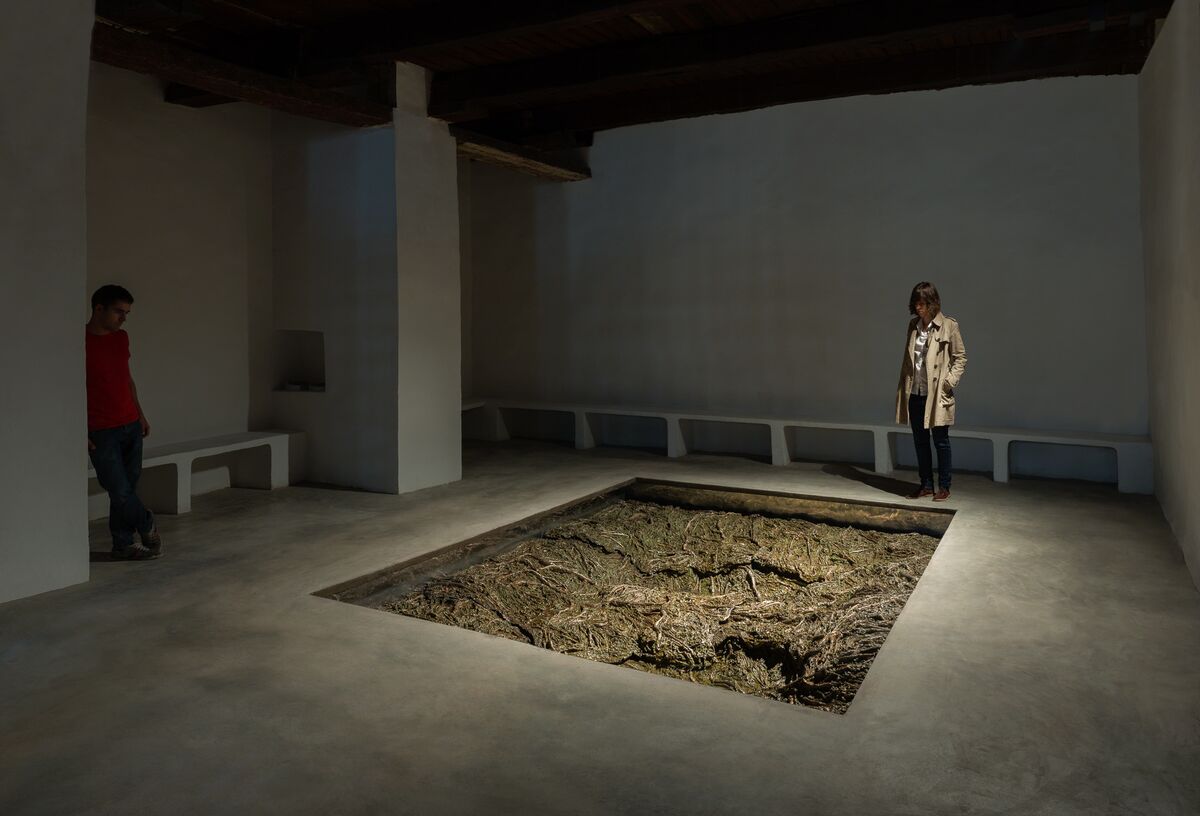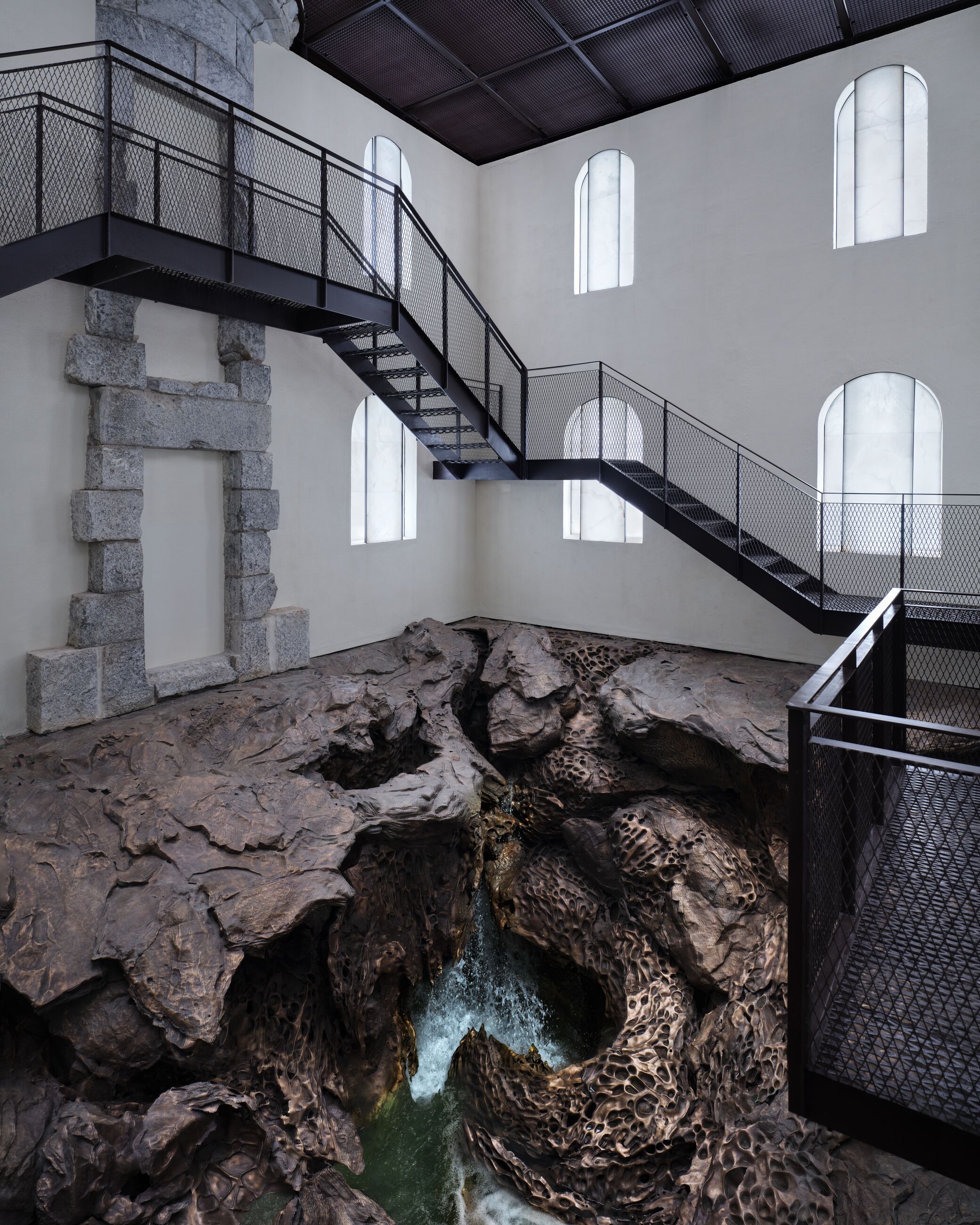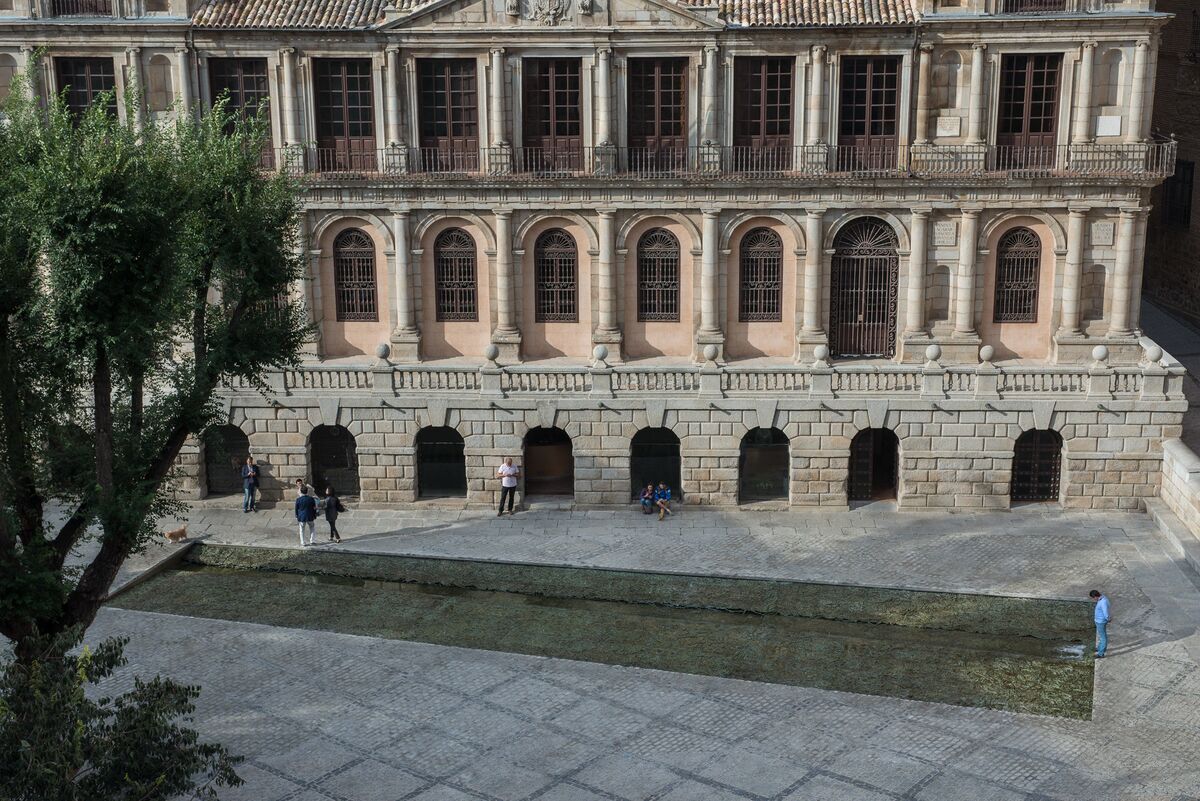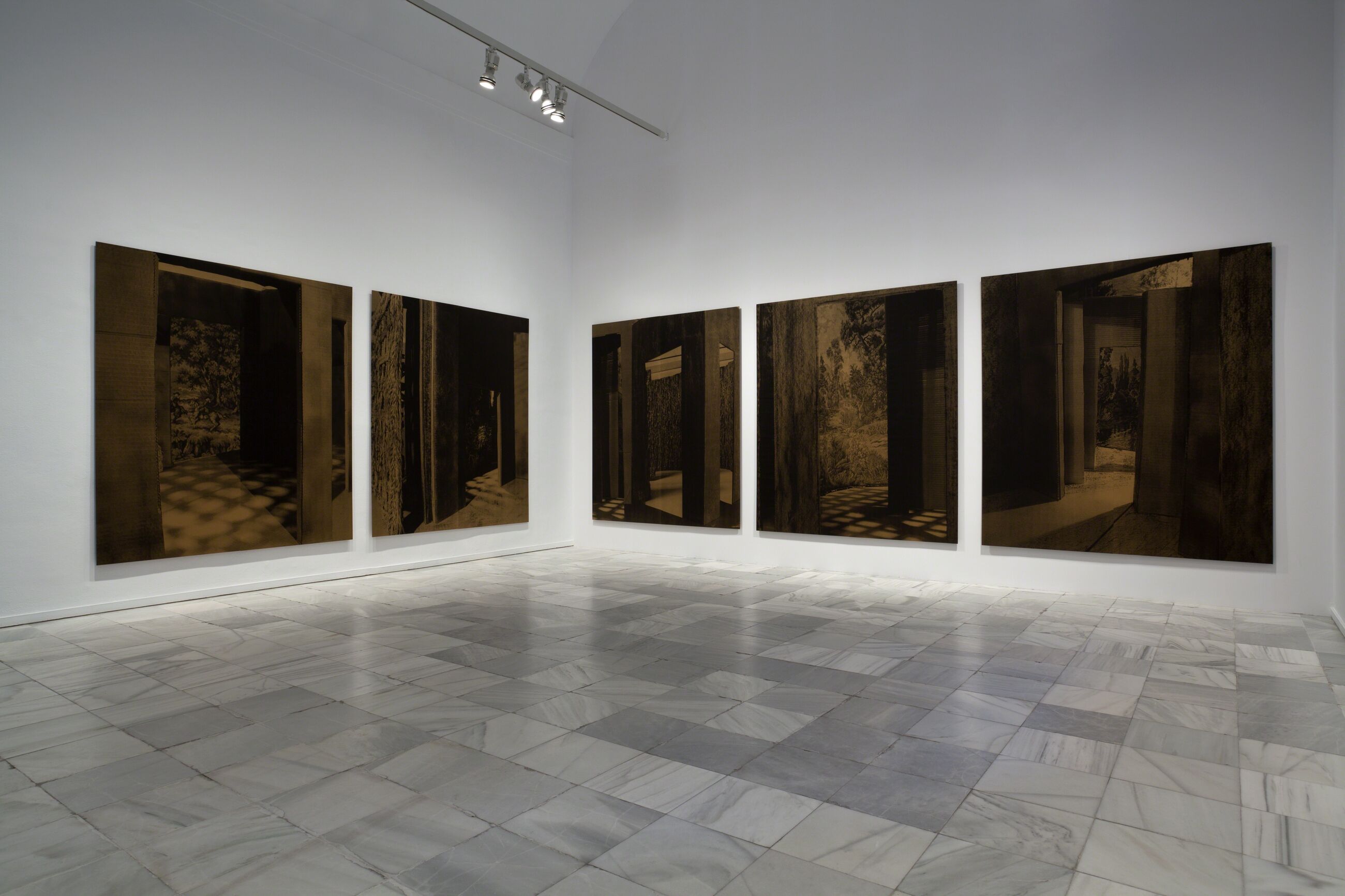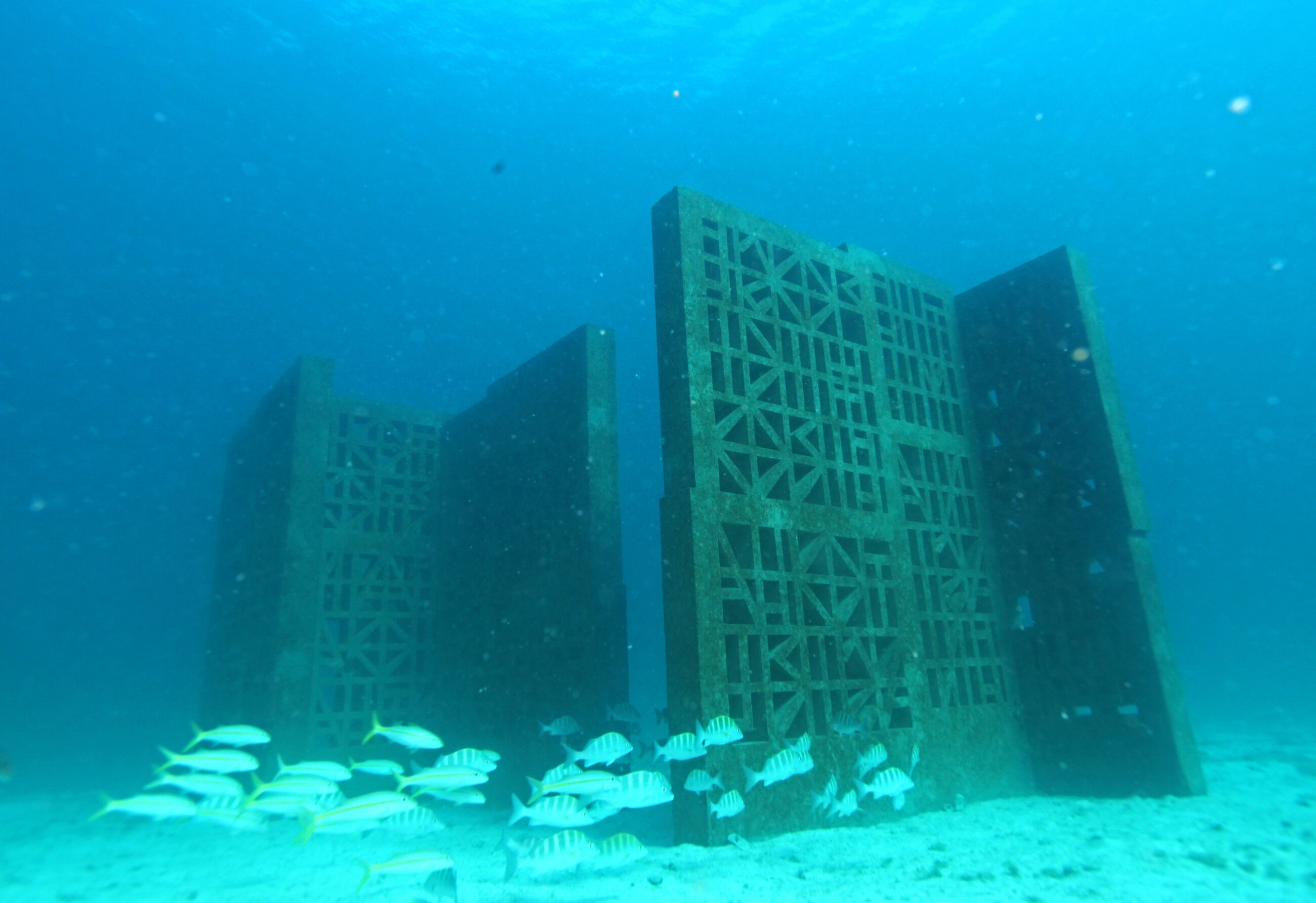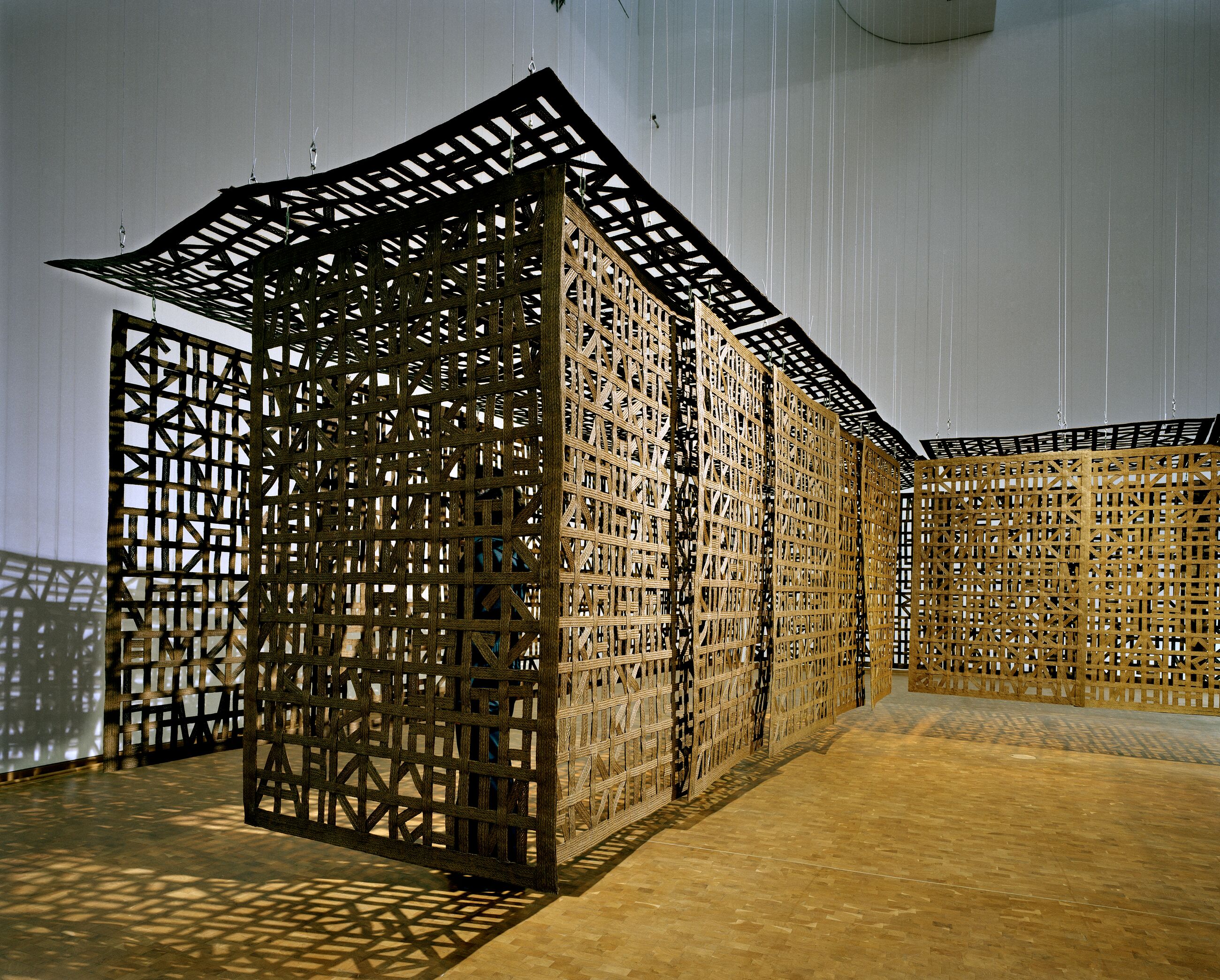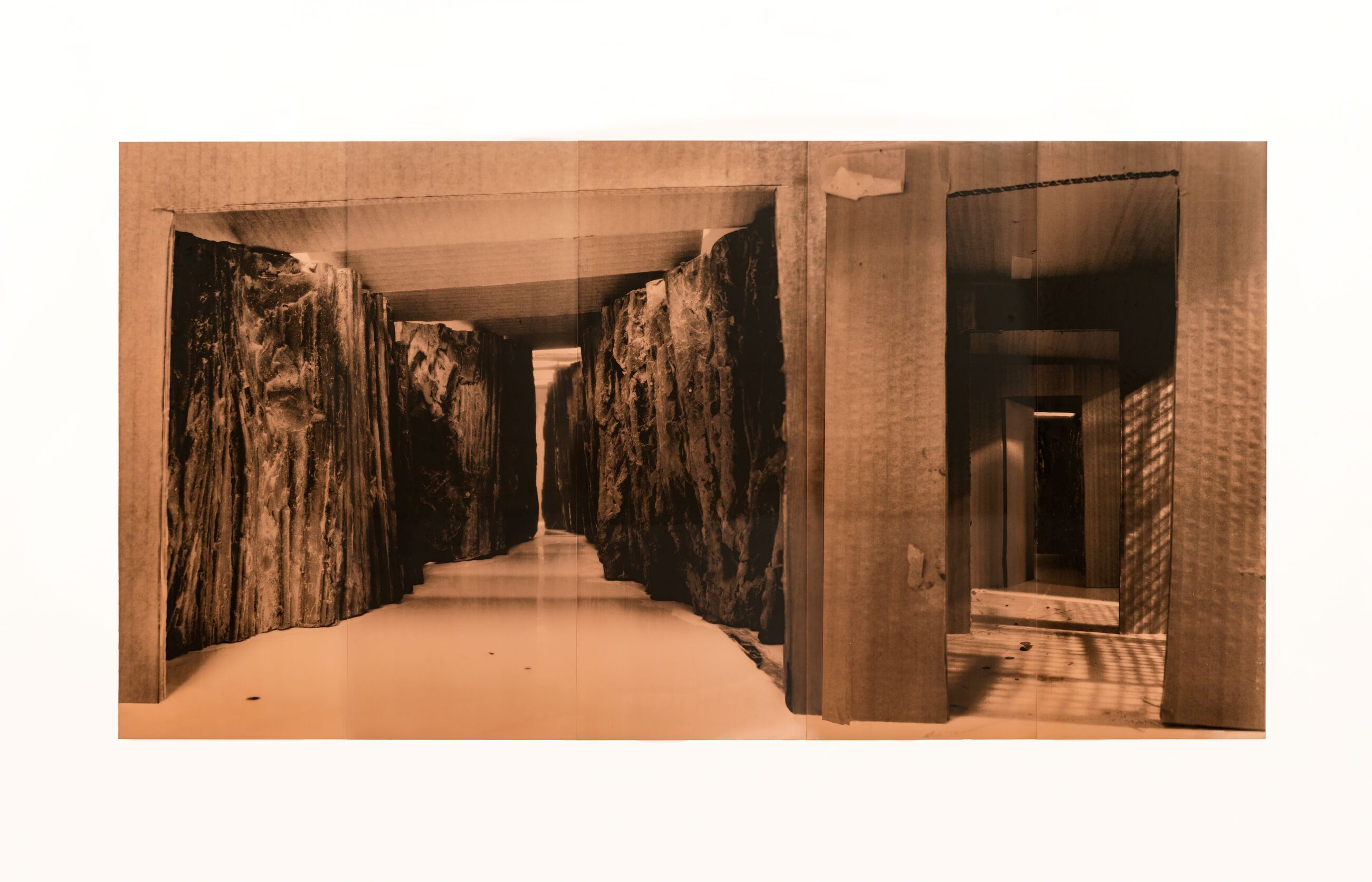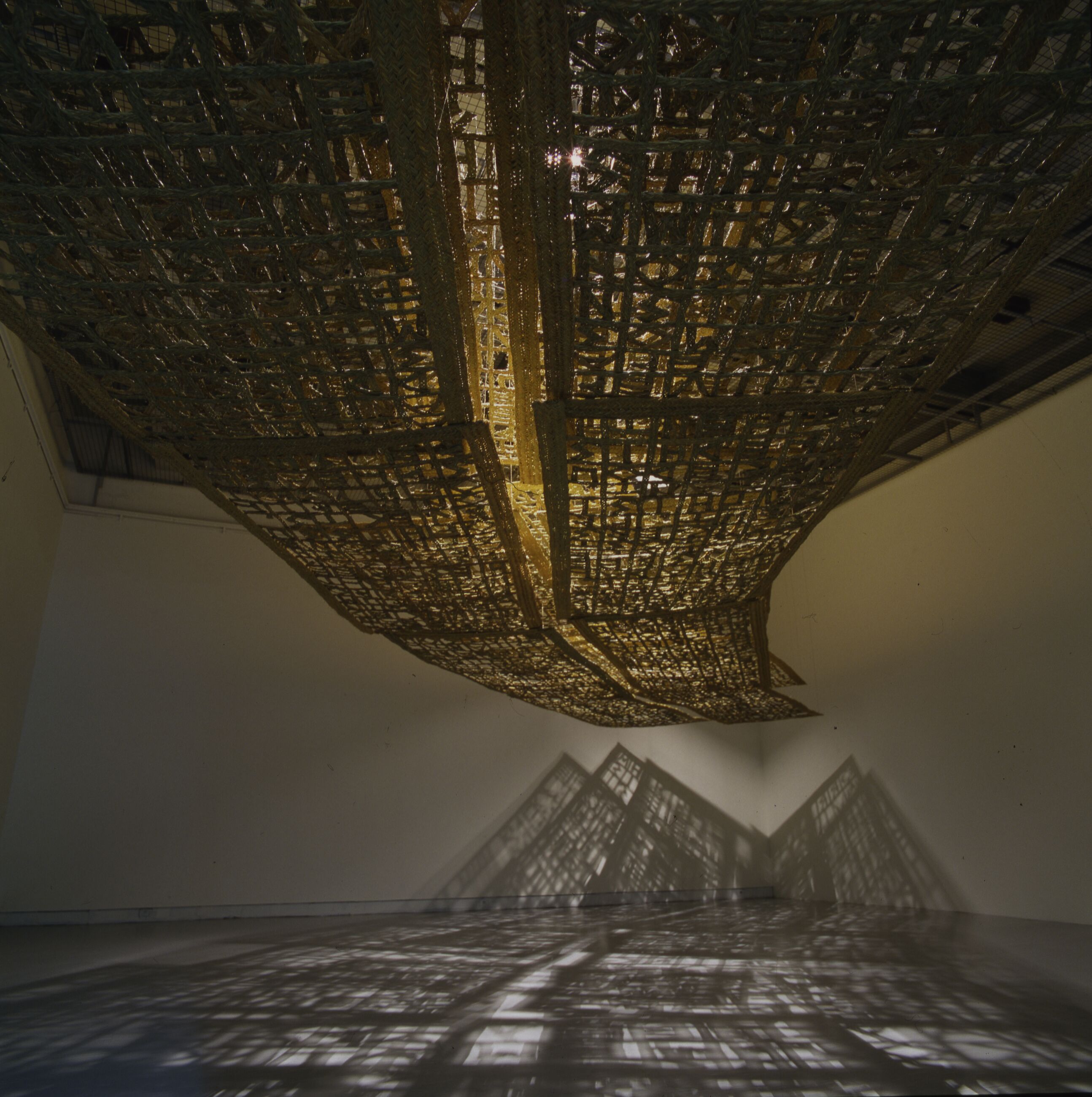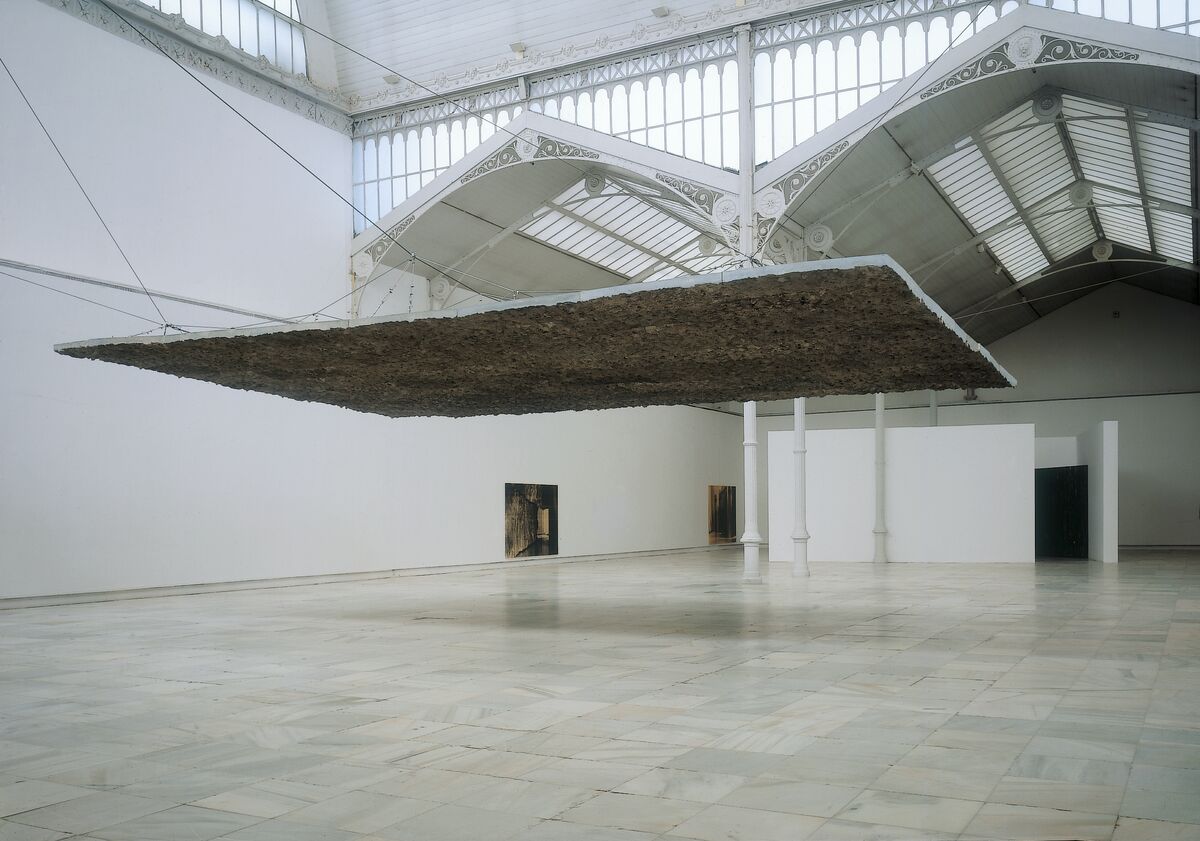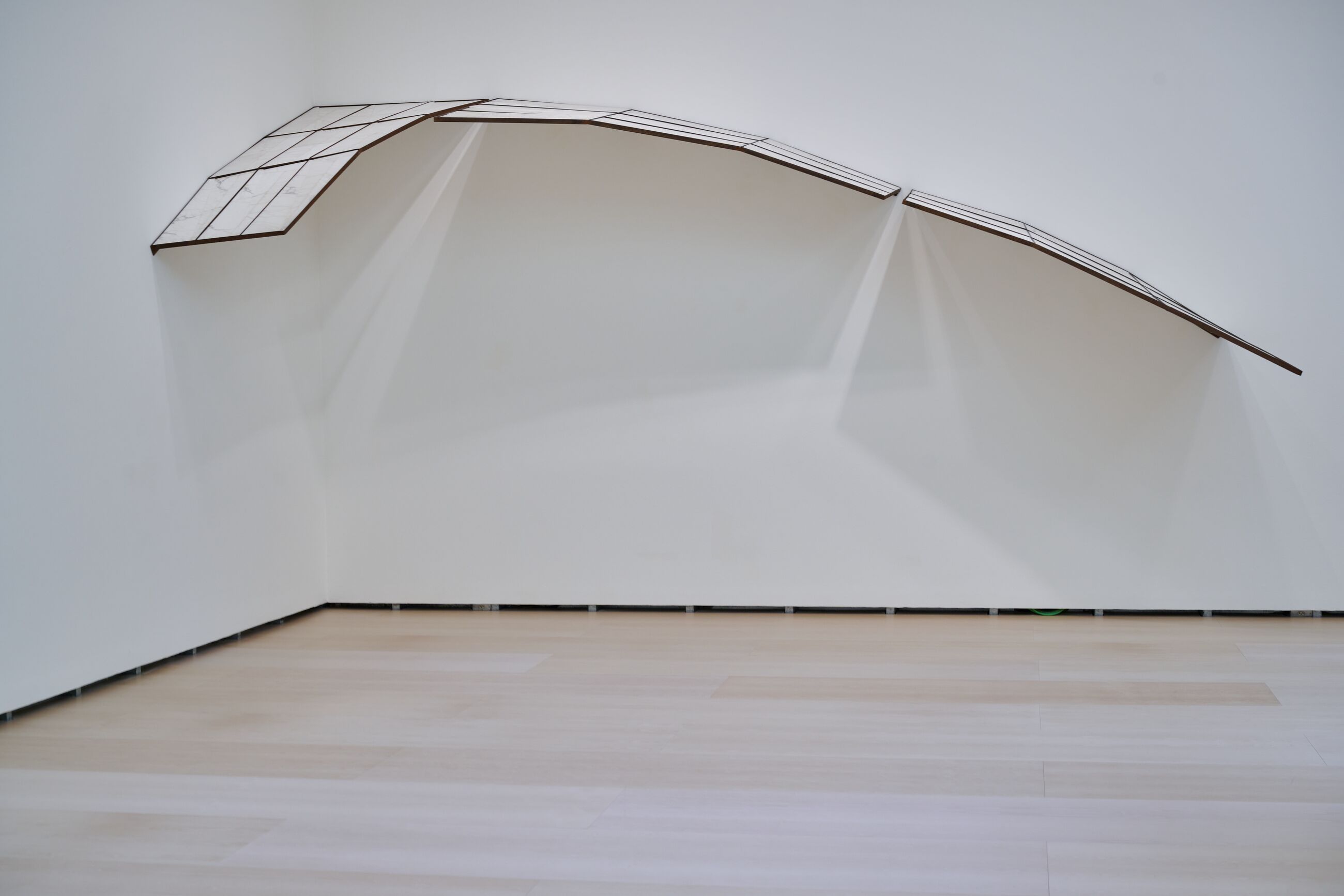
Cristina Iglesias

Over more than four decades, Cristina Iglesias (b. 1956, Donostia-San Sebastián, Spain) has defined a unique sculptural vocabulary, creating immersive and experiential environments that reference and unite architecture, literature, psychology, mechanics, natural elements and site-specific content. Guided by a profound cultural and historical sensitivity, as well as a deep concern for the natural world, Iglesias’ works poetically redefine the viewer’s relationship to time and place.
Iglesias pursued a degree in chemical sciences at the University of the Basque Country, before studying ceramics and drawing in Barcelona. She then continued her studies at Chelsea School of Art, moving to London in 1980. This interdisciplinary approach and her interest in experimentation laid the foundations for her art, ‘Drawing and working with clay was always, and still is, a way of thinking, but I was also very interested in science, particularly the laboratory part of it, the exploration,’ Iglesias says.
Iglesias returned to Spain from the UK in the early 1980s, where she developed a distinctive sculptural language of quasi-architectural forms—walls, pavilions, archways, canopies, ceilings—that carved out precarious enclosures and shelters in dialogue with the exhibition space. Using conventional materials such as iron, aluminum and cement in combination with alabaster, glass and textiles, Iglesias’ sculptures from this period are at once objects and places, experimenting with lightness, perforation and translucency to open up spaces in a way that shifts perception of the environments they inhabit.
Over the course of the 1990s, Iglesias’ practice continued to evolve, fusing natural textures cast from vegetation—including eucalyptus and bamboo—with architectural forms to create the opaque chambers and screens of her ‘Vegetation Rooms’. In 1993, she represented Spain at the Venice Biennale for a second time showing alongside Antoni Tàpies. She was appointed Professor of Sculpture at the Akademie der Bildenden Künste in Munich, Germany in 1995. She also created her first outdoor piece, an installation on the remote island of Moskenes in northern Norway, and realized her first architectural collaboration, a commission from Belgian architects Paul Robbrecht and Hilde Daem. This initiated an ongoing partnership that would later result in her highly acclaimed public work ‘Deep Fountain’ (1997 – 2006).
Following this, Iglesias’ focus shifted from the creation of architecture within rooms to the construction of rooms themselves. Works for public sites intervene in urban and non-urban environments to create gathering places that disrupt the fabric of the everyday.
In 2010 the artist created ‘Estancias Sumergidas’ (2010), three diaphanous pavilions, constructed from latticed concrete walls made up of letterforms, installed on the sea floor of a nature reserve in Baja California. Water is also fundamental to large-scale installations such as ‘Tres Aguas’ (2014) in Toledo, Spain; ‘Forgotten Streams’ (2017) for the Bloomberg headquarters in London and ‘Hondalea’ (2020 – 2021), a monumental work located within an excavated lighthouse on the island of Santa Clara, Spain.
Iglesias’ installations redefine perceptions of architectural and natural spaces while engaging deeply with the history of place. Today, she continues to pursue concerns with the subterranean and the slow time of the organic and geological world. Recent installations such as ‘Landscape and Memory’ (2022) in New York’s Madison Square Park unearth the natural and cultural histories of built urban environments, uncovering a fragile world of forgotten waterways, hidden roots and vegetation, with these ideas of phreatic spaces and natural growth echoed in the artist’s sculptural production.
Iglesias’ work has been presented in more than 60 solo and group exhibitions around the world. She has created major public art commissions for Antwerp, Belgium; Baja California, Mexico; Bloomberg Headquarters, London; Instituto Inhotim, Brazil; Madison Square Park, New York NY; Museo del Prado, Madrid; Museum of Fine Arts, Houston TX; Toledo, Spain; Santa Clara Island, San Sebastián, Spain; Royal Academy of the Arts, London and more. She has represented Spain at the Venice Biennale (1986, 1993), and participated in the Biennale of Sydney (1990, 2012), the Taipei Biennial (2003), the Carnegie International (2003), the SITE Sante Fe Biennial (2006) and the Folkestone Triennial (2011).
The prominent public collections which have holdings of Iglesias’ work throughout the world include the Centre Georges Pompidou, France; Fundação Serralves, Portugal; Institut Valencià d’Art Modern (VAM), Spain; Kunsthalle Bern, Switzerland; Museo de Arte Contemporáneo de Barcelona (MACBA), Spain; Museo Guggenheim Bilbao, Spain; Hirshhorn Museum, Washington DC; Solomon R. Guggenheim Museum, New York NY; Museum of Modern Art, New York NY; and Tate Modern, UK. She is the recipient of the Sorolla Medal from the Hispanic Society in New York (2024); Royal Academy Architecture Prize (2020); National Graphic Arts Award Spain (2019); Grosse Kunstpreis Berlin (2012); and Spain’s National Visual Arts Prize (1999), among others.
Selected Artworks

Entwined
2023

Untitled
1990

Untitled
1993 – 1997

Untitled
1993 – 1997

Growth I
2018
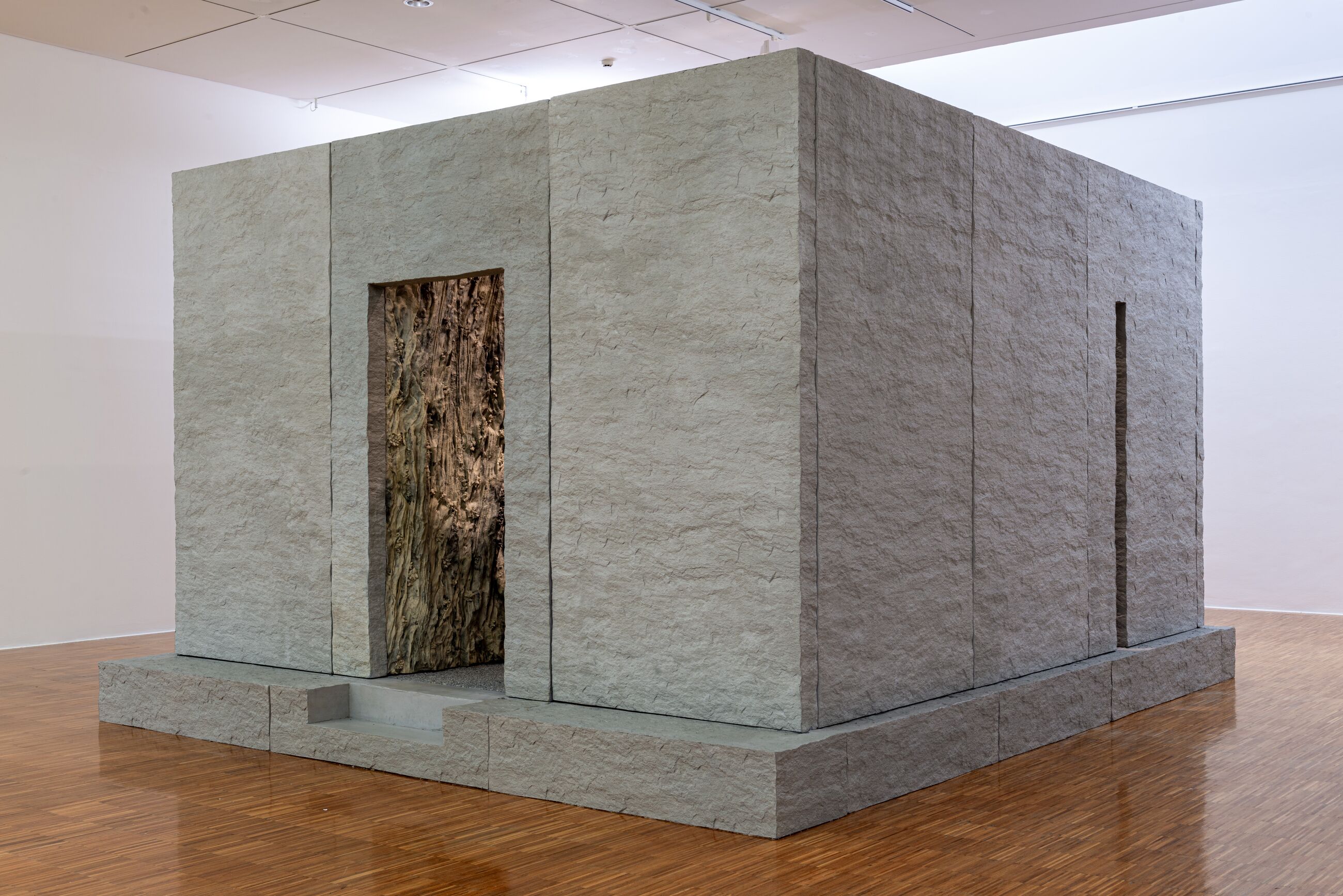
Chambre Minérale Humide
2020 – 2022

Wet Labyrinth (with Spontaneous Landscape)
2020 – 2022
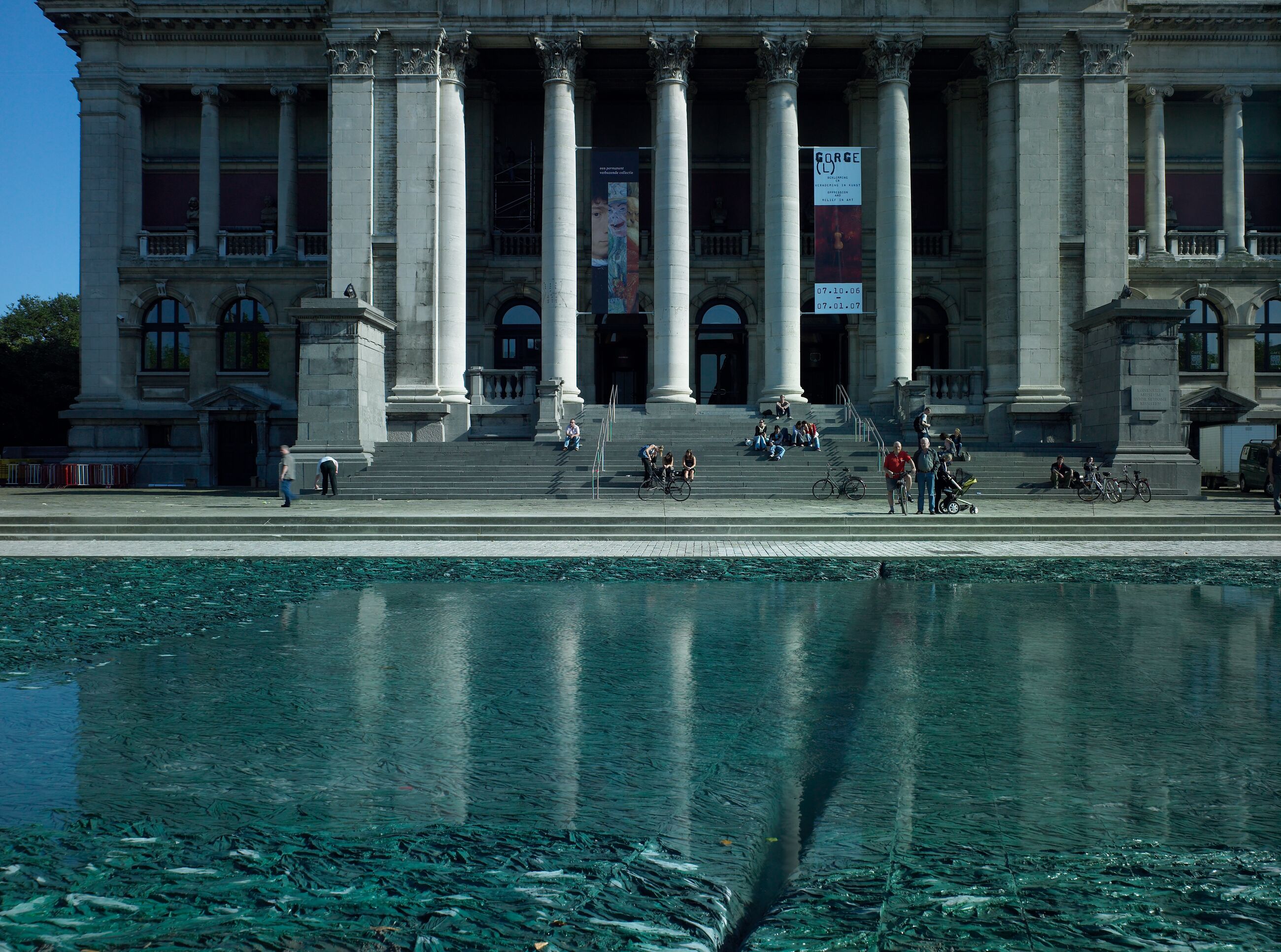
Deep Fountain
1997 – 2006
Events
1 / 2
News
1 / 2
